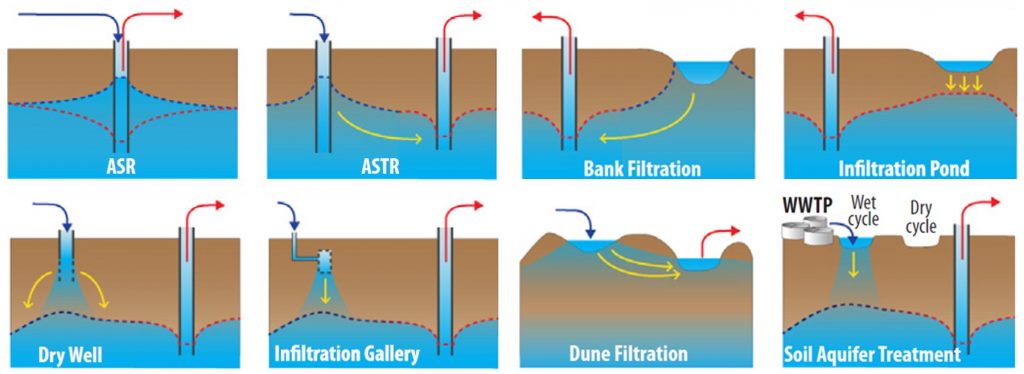Managed Aquifer Recharge (MAR) consists in the intentional and planned injection of excess surface water into the subsurface to achieve environmental benefits, such as improving groundwater quantity and quality, countering saltwater intrusion and preventing subsidence, or to store the water resource for later recovery, e.g. for irrigation reuse. MAR is considered a measure to mitigate the effects of climate change as it reduces the impact of drought seasons on the overall water availability, through the increase of available groundwater.
The main MAR types include ASR (Aquifer Storage and Recovery) and ASTR (Aquifer Storage, Transport and Recovery) through wells, dry injection wells, infiltration galleries or trenches, bank filtration, infiltration ponds, dune filtration, SAT (Soil Aquifer Treatment) and other systems employing surface or underground dams.

MAR solutions can be found in dry regions around the world, like Australia and California, where they are appreciated for their easy design and construction, low implementation and maintenance costs, low evaporation losses and possibility to store large volumes of water. In Italy, MAR is not yet widely spread mainly due to public perception and lack of regulation, although experimental sites can be found across the country.
The research activity of the Groundwater Engineering group is focused on:
• Numerical modelling of MAR, considering different types of infrastructure (injection trenches, injection wells and infiltration through field flooding) under various aquifer characteristics and water reuse points and schedules.
• Field feasibility testing of MAR applications.
at three experimental sites in the province of Cuneo, in the framework of the SeTe project funded by the EU programme INTERREG ALCOTRA 2021-27. Further information is available here.
The SeTe ALCOTRA project involves three experimental sites in the province of Cuneo. Project funded by the EU programme INTERREG ALCOTRA 2021-27. Further information is available here.